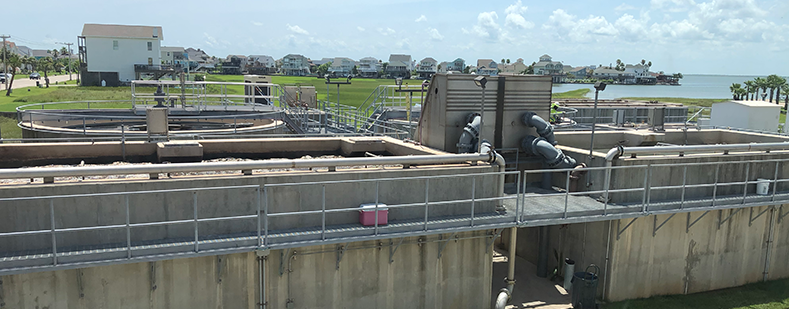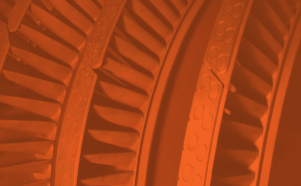Structures within wastewater treatment plants are exposed to extreme environmental conditions each and every day. Coatings failure in these facilities are common occurrences. If coatings issues are neglected, damage from corrosion can lead to plant shutdowns and costly replacement of assets.
“We see a great deal of deterioration among components of sewer treatment plants. These plants really are the worst kind of environment for protective coatings. We see a lot of delamination and the premature failure,” explained Frank Madero, president of Madero Engineers & Constructors, LLC. When existing coatings fail, the underlying substrates must be properly prepared for the installation of a new protective coating system.
When the Madero crew arrived on the scene of a recent project at a wastewater treatment plant in a coastal town in the southern U.S., they were confronted with sewer structures that were coated with a delaminating elastomeric coating. While the plant was constructed in 2014, the elastomeric coating was applied in 2017 to the various metal and concrete components of the wastewater treatment plant. After only two years of service, the applied coating was delaminated and failing. “The plant’s concrete and metal structures had accelerated deterioration due to exposure to the lethal combination of an aggressive marine environment and chemical and hydrogen sulfide attack,” said Madero.
Madero and his team were tasked with the turnkey certified design, surface preparation, installation of Warren epoxy liner, QC testing and inspection of all components of the sewer tanks, concrete and brick manholes, metal pipes and structures. Madero also performed inflow and infiltration (I/I) structural repairs.
The five-man Madero crew turned to the low dust and environmentally friendly Sponge-Jet abrasive blasting technology to remove the existing elastomeric coating from the clarifier tank structure, aeration basin tank structure, chlorine contact chambers structure, digester tank, and manholes.
Coating Removal Challenges
According to Madero, the main reason sponge media abrasive blasting was chosen for this job was because the existing elastomeric coating was very difficult to remove. “Sponge media abrasive blasting has been proven to easily remove this type of coating system. We considered chemical coating removal/surface prep, but the chemicals are toxic and hard to work with,” said Madero. The crew used Silver 30 Sponge Media™ to remove the failing elastomeric coating and properly prepare the concrete and metal substrates for the installation of the new Warren epoxy liner.
Low Dust and a Portable Footprint
Another advantage of Sponge Media abrasive blasting is that it produces little dust. The wastewater treatment plant is located right on the beach and windy conditions were the norm. With the Sponge-Jet technology, dust contamination was a non-issue. “Zero containment was needed, and that was a huge plus on this job. Cleanup was also easy and non-labor intensive,” said Madero.
In addition, sewer treatment plants have concrete and metal components with many geometries, such as metal arms and cylinders. Sponge Media abrasive blasting is versatile, can be used on both concrete and metal and is portable, making it easy for the Madero team to move around the plant and properly prepare each component.

Tight Timeline for Success
For the duration of the job, it was business as usual for the wastewater treatment plant. “The plant was one hundred percent operational during the rehabilitation process. We understood that all tasks had to be executed in a timely manner without sacrificing quality or safety,” said Madero. With the exception of the clarifier, which took the crew five weeks from surface prep to coating installation, all structures were turned over in two to three weeks.
“It’s one of the best projects we’ve done. The client is happy, and we proudly stand by our surface preparation and our coating installation. We couldn’t have done the job as successfully without the Sponge-Jet technology,” said Madero.








